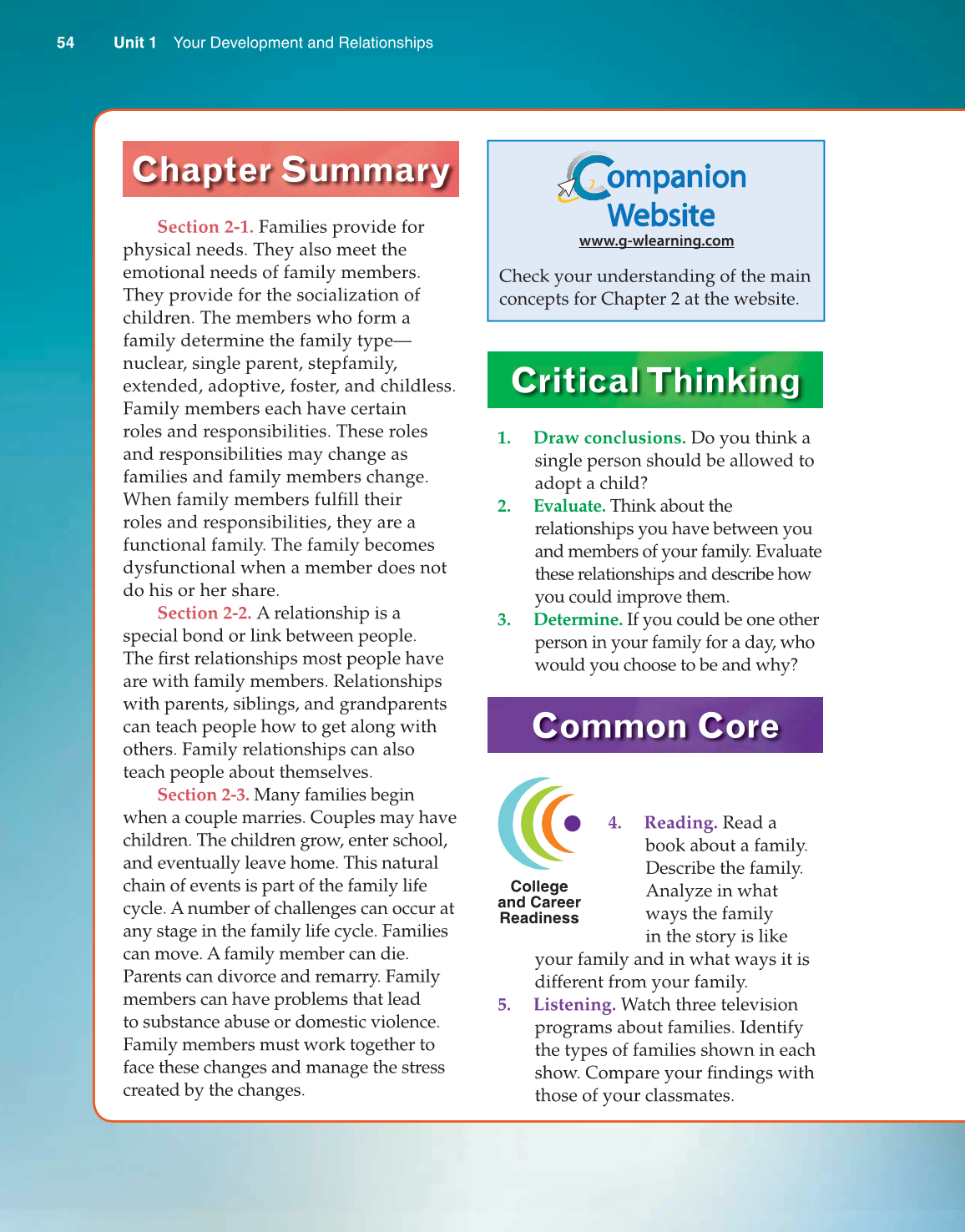54 Unit 1 Your Development and Relationships
Chapter Summary
Section 2-1. Families provide for
physical needs. They also meet the
emotional needs of family members.
They provide for the socialization of
children. The members who form a
family determine the family type—
nuclear, single parent, stepfamily,
extended, adoptive, foster, and childless.
Family members each have certain
roles and responsibilities. These roles
and responsibilities may change as
families and family members change.
When family members fulfi ll their
roles and responsibilities, they are a
functional family. The family becomes
dysfunctional when a member does not
do his or her share.
Section 2-2. A relationship is a
special bond or link between people.
The fi rst relationships most people have
are with family members. Relationships
with parents, siblings, and grandparents
can teach people how to get along with
others. Family relationships can also
teach people about themselves.
Section 2-3. Many families begin
when a couple marries. Couples may have
children. The children grow, enter school,
and eventually leave home. This natural
chain of events is part of the family life
cycle. A number of challenges can occur at
any stage in the family life cycle. Families
can move. A family member can die.
Parents can divorce and remarry. Family
members can have problems that lead
to substance abuse or domestic violence.
Family members must work together to
face these changes and manage the stress
created by the changes.
ompanion
Website
www.g-wlearning.com
Check your understanding of the main
concepts for Chapter 2 at the website.
Critical Thinking
1. Draw conclusions. Do you think a
single person should be allowed to
adopt a child?
2. Evaluate. Think about the
relationships you have between you
and members of your family. Evaluate
these relationships and describe how
you could improve them.
3. Determine. If you could be one other
person in your family for a day, who
would you choose to be and why?
Common Core
College
and Career
Readiness
4. Reading. Read a
book about a family.
Describe the family.
Analyze in what
ways the family
in the story is like
your family and in what ways it is
different from your family.
5. Listening. Watch three television
programs about families. Identify
the types of families shown in each
show. Compare your fi ndings with
those of your classmates.
